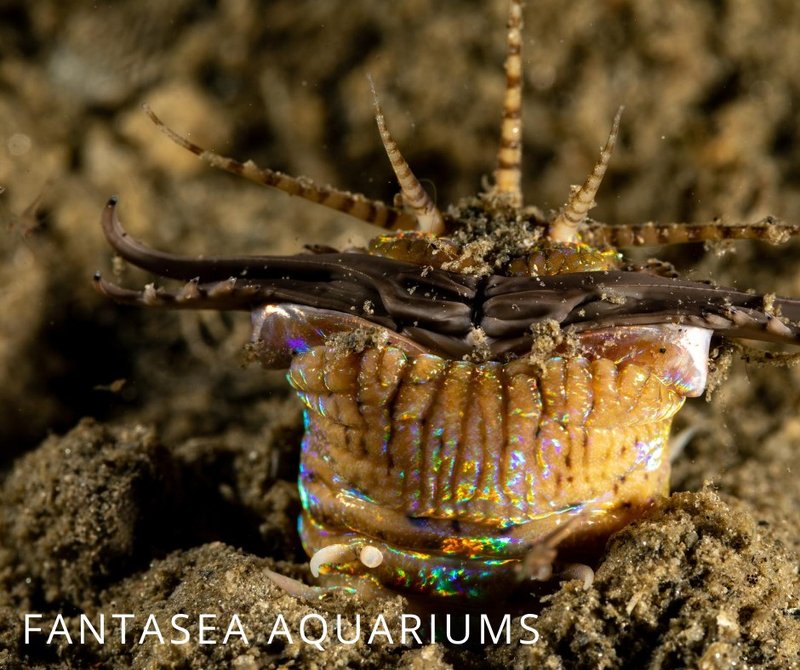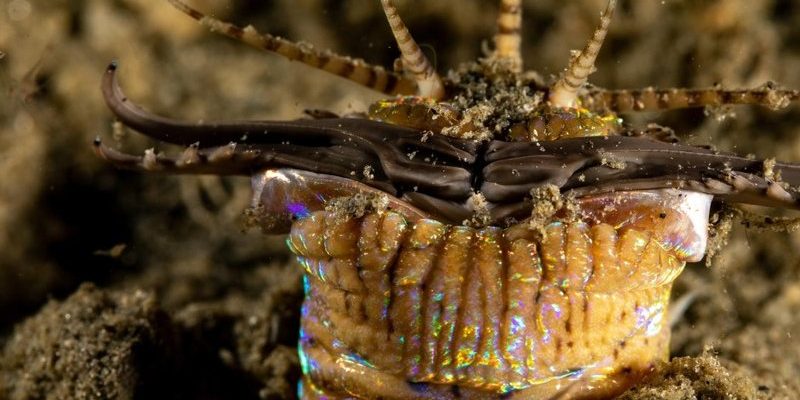
These fascinating creatures can be both a wonder and a worry for reef tank enthusiasts. Imagine having a secretive, multi-colored monster hiding in the substrate, waiting for the perfect moment to strike. That’s what a Bobbit worm does, and it can lead to unexpected fish losses. Let’s dive into what you really need to know about Bobbit worms, how they can affect your fish, and what steps you can take to keep your reef tank thriving.
What Are Bobbit Worms?
Bobbit worms are fascinating marine creatures that belong to the Eunicidae family. These polychaete worms can grow quite long—some reaching over three feet! They are usually found buried deep in the substrate of the ocean floor, cleverly hiding away. Their bodies are segmented, and they often display vibrant colors that can range from green to red, making them intriguing yet potentially dangerous inhabitants.
You might be wondering why they’re called Bobbit worms. The name comes from the infamous Lorena Bobbitt, who became known for a rather shocking event. Just like that, these worms can “cut” to the chase. They use their strong jaws to grab unsuspecting fish or other prey that come too close, making them effective ambush predators. Understanding these creatures will help you appreciate their role in the ecosystem and the potential challenges they pose to your reef tank.
How Do Bobbit Worms Impact Reef Tank Fish?
The primary concern with Bobbit worms is their predatory nature. When they feel vibrations in the water—like those created by a swimming fish—they quickly emerge from their hiding spots to snatch their meal. This can be devastating for your reef tank, especially if you have small or timid fish.
Imagine one of your favorite fish being snatched away in an instant—it’s a heartbreaking thought for any aquarist. In many cases, the initial signs of fish loss may go unnoticed until you start to notice unexplained gaps in your tank’s population. Bobbit worms are stealthy, so you might not even realize you have one until it’s too late.
The presence of Bobbit worms can lead to significant fish losses, especially in smaller tanks where hiding spots are limited. This is particularly true if you keep smaller species that are naturally at risk of being taken by these crafty worms.
Identifying Bobbit Worms in Your Tank
So, how do you know if a Bobbit worm has taken up residence in your aquarium? It can be tricky since they spend most of their time hidden in the substrate. Here are some signs to look out for:
- Visible Segments: If you see a long, segmented body poking out from the sand, that’s a clear sign. They can be tough to spot, but a careful inspection of the substrate can reveal their presence.
- Feeding Behavior: If your fish are mysteriously disappearing, or you notice strange wounds on them, it could indicate that a Bobbit worm is on the prowl.
- Burrows: Look for holes or tunnels in your substrate. Bobbit worms dig elaborate networks, and these can be a dead giveaway.
If you suspect you have a Bobbit worm, don’t panic just yet. There are steps you can take to confirm its presence and evaluate the risk to your fish.
Preventing Bobbit Worm Infestations
The best defense is a good offense. Preventing Bobbit worms from entering your reef tank in the first place is the smartest approach. Here are some effective strategies:
- Quarantine Live Rock: Whenever you purchase new live rock, make sure to quarantine it for a few weeks. This helps prevent any unwanted creatures from entering your tank.
- Thoroughly Inspect New Additions: When adding fish or invertebrates, carefully check for any signs of Bobbit worms or other pests that could cause issues.
- Regular Maintenance: Keep your tank clean and well-maintained. This means regular water changes, substrate cleaning, and monitoring your fish’s health.
By being proactive, you can significantly reduce the chances of Bobbit worms making their way into your beautiful reef oasis.
Dealing with Established Bobbit Worms
If you discover that a Bobbit worm has already settled in, you have a few options, but cleaning it out can be tricky. Here’s how you might handle the situation:
1. Remove Substrate: Depending on how many worms are present and their size, you may need to remove some of the substrate. This is easier in smaller tanks but can be disruptive for larger aquariums.
2. Targeted Removal: Using tweezers or a feeding stick, you can try to coax the worm out slowly. Be careful, though—these worms can break off and regenerate, so it’s best to remove them entirely.
3. Consider Natural Predators: Some fish, like larger wrasses, might eat Bobbit worms. However, this comes with the risk of introducing more potential problems into your tank.
Dealing with Bobbit worms isn’t always straightforward, but being aware of their presence and acting quickly can help you protect your fish.
Why Understanding Bobbit Worms Matters
In the world of reef tanks, knowledge is power. Understanding Bobbit worms is crucial if you want to maintain a healthy aquatic environment. By learning about these creatures, their habits, and how they can affect your fish, you’ll be better equipped to protect your tank from losses.
Here’s the thing: every marine ecosystem, including your aquarium, has its balance. While Bobbit worms can be a threat, they also play a role in the broader ecosystem. They help recycle nutrients and keep certain populations in check. So, while you may not want them in your tank, their existence is part of the delicate dance of marine life.
By understanding and respecting this balance, you can create a thriving environment for your fish while minimizing the risks posed by critters like Bobbit worms.
Final Thoughts on Bobbit Worms and Fish Loss
Bobbit worms may seem intimidating, but with the right information and precautions, you can protect your reef tank from their predatory nature. Keep an eye out for signs of their presence, practice good aquarium maintenance, and be mindful of new additions to your tank.
Remember, a healthy reef tank is all about balance. Embrace the wonders of marine life while being aware of potential threats. By taking a little time to understand Bobbit worms, you can create a more vibrant, diversified habitat that brings joy and beauty to your home. Happy fishkeeping!

